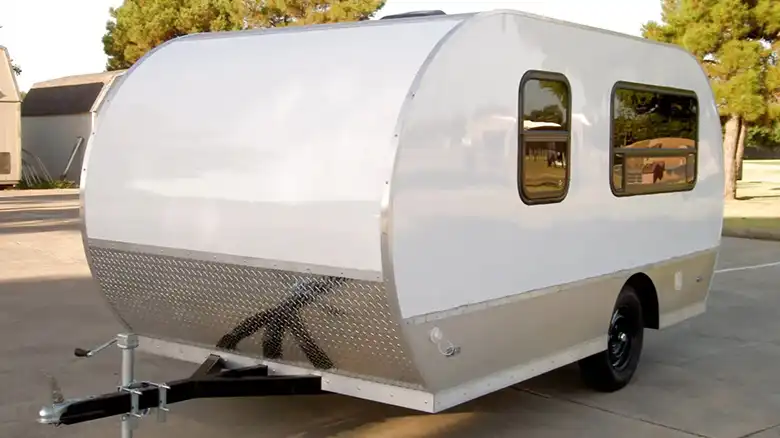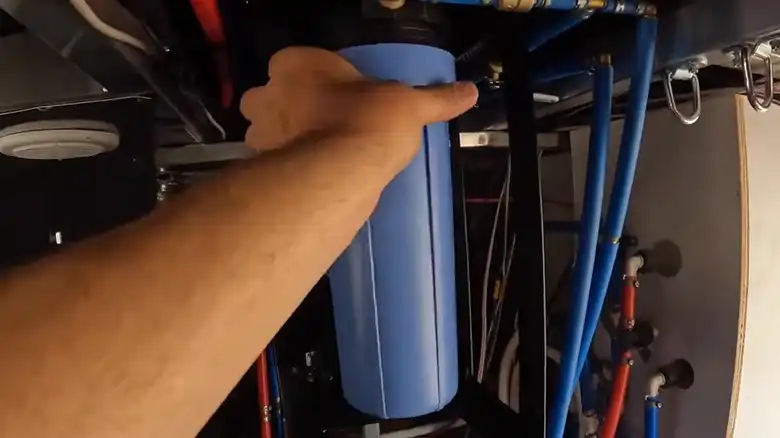Camping is a great way to enjoy nature and make lasting memories. However, it can be difficult to access hot water for cooking, cleaning, and drinking when you’re out in the wilderness. Heating water without modern plumbing requires thoughtful preparation and packing of the right gear.
There are several effective methods to heat water while camping, from tried-and-true campfire techniques to portable stove options. With some knowledge and the proper supplies, you can safely and efficiently produce hot water off the grid. This allows you to focus on fun instead of concerning yourself with meeting basic needs.
In this article, I’ll explore various options for heating water while camping. I’ll help you determine the best heating solution for your next outdoor adventure. With the right information and equipment, you can relax in your tent or around the campfire knowing you’ll have hot water available to cook, clean up, and stay hydrated. The peace of nature awaits!
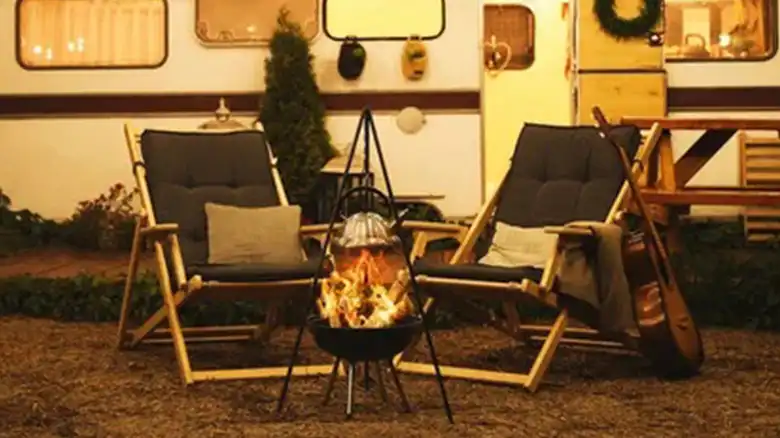
The most traditional way to heat water while camping is by boiling it over an open campfire flame. This time-tested technique has remained popular for good reason.
Traditional Campfire Method: Boil Water Over an Open Flame
This simple method involves suspending a metal pot or kettle over a campfire and bringing water to a rolling boil. It’s an easy, accessible way to heat water for most campers. The direct exposure to flames can make it faster than some other options. However, it also lacks efficiency and can be tricky to control the temperature.
Pros:
– Simple, no equipment needed
– Takes advantage of campfire you may already have
Cons:
– Hard to control temperature precisely
– Inefficient compared to contained heat sources
Using a Kettle Over the Campfire: Safe and Easy Pouring
Hanging a camping kettle with a long handle over the fire enables easier heating and pouring. The handle lets you pivot the kettle off the flames for steeping or pouring. Kettles are generally affordable, portable options that work well for heating smaller amounts of water.
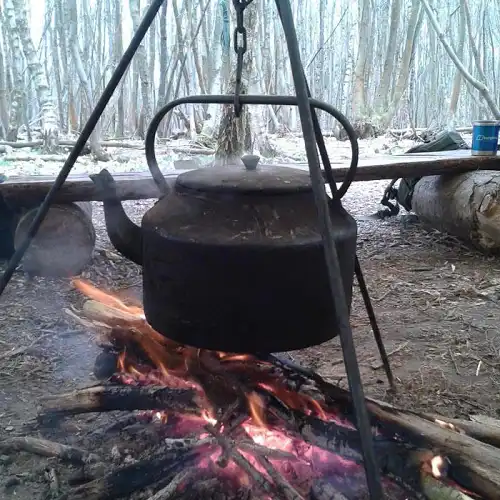
Pros:
– Built for easy handling over a fire
– Spout allows for pouring without extra tools
Cons:
– Smaller capacity than pots
– Still less efficient than contained heat
Heat Water with a Portable Grill or Grate
Setting a pot or kettle on top of a grill over the fire provides more stability and control. It allows you to adjust the pot higher above flames or farther to the edges to manage the temperature. Grills and grates designed for camping are lightweight and packable.
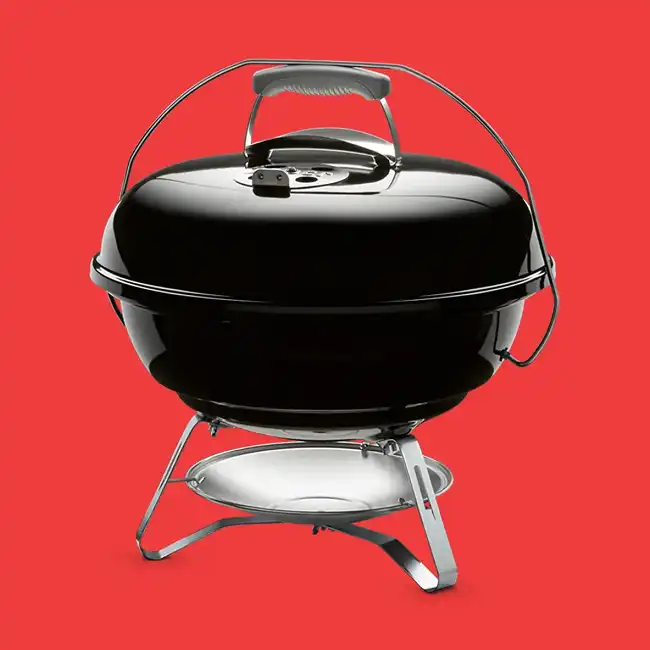
Pros:
– More control over temperature/boiling
– Keeps pot stable for safer heating
Cons:
– Added piece of equipment to pack and set up
Efficient Heating with Portable Stoves
Portable camping stoves allow for cooking directly on the contained heat source. This provides more efficiency, control, and convenience than heating over an open fire. There are a few common fuel options to consider.
Gas-Powered Stoves
Propane camping stoves are a popular choice. They generate instant, contained heat from pressurized gas and allow you to boil water quickly. Heat output is adjustable with a regulator. Canister fuel makes these stoves easy to use and maintain.
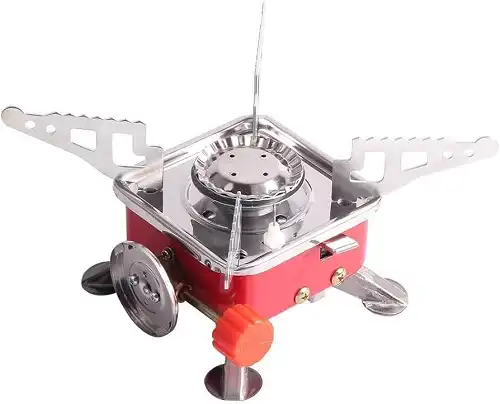
Pros:
– Fast and consistent heat source
– Adjustable flame for more control
– No liquid fuel spill hazards
Cons:
– Canisters add cost over time
– Potentially unstable on uneven ground
Liquid Fuel Options
Stoves that run on various liquid fuels like alcohol, gasoline, kerosene, or diesel allow flexibility in fuel choice. However, they can be more complex to operate and maintain. Priming, pressurizing, and cleaning are extra considerations.
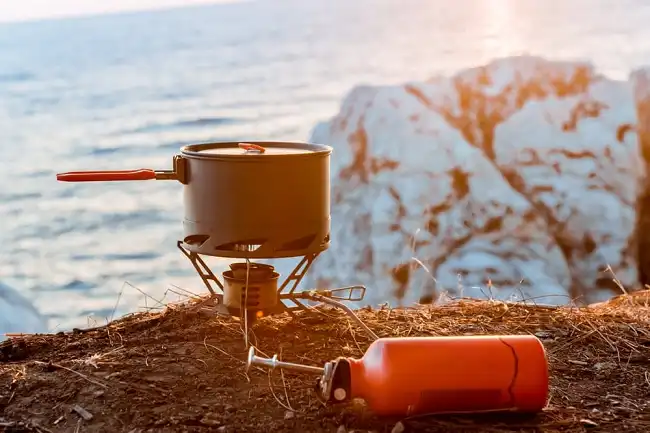
Pros:
– Use a variety of efficient fuel sources
– Powerful performance for large-scale cooking
Cons:
– More parts and maintenance required
– Fuel spills/vapors can be a hazard
Propane and Canister Stoves Explained
Small propane stoves designed for camping provide a convenient heat source powered by detachable propane canisters. They are lightweight, stable, and simple to control. The enclosed flame prevents wind disruption. Propane offers an efficient fuel source and is readily available.
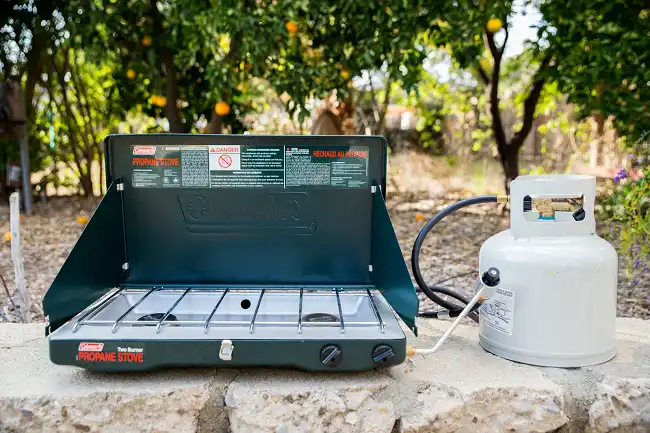
Pros:
– Lightweight and portable
– Wind-resistant enclosed design
– Simple to use and reliable
Cons:
– Limited cooking space
– Propane canisters have added cost
Using a Canister Fuel Stove
Canister fuel stoves integrate the burner and detached fuel canister into one unit. Popular canister fuel types include propane-butane or isobutane-propane mixes. These stoves are extremely portable, stable, and easy to use. The canisters offer convenient pressurized fuel until empty.
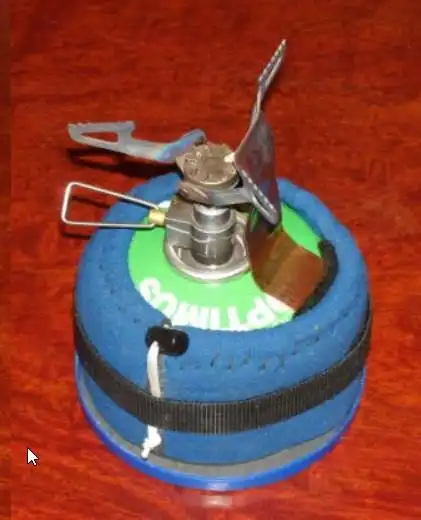
Pros:
– Ultra-compact and lightweight
– No priming or pressurizing required
– Boil water efficiently in minutes
Cons:
– Canisters not refillable
– Performance declines in cold weather
Solar-Powered Water Heating Solutions
Solar-powered water heating utilizes the sun’s renewable energy for a sustainable camping option. Solar solutions typically involve bags or portable water heaters.
Solar Water Bags
These simple bags are made of durable polymer and have a wide opening to absorb sunlight. Filling a solar shower bag and leaving it in the sun can provide a warm water source when needed. Effectiveness depends on sufficient sunlight.
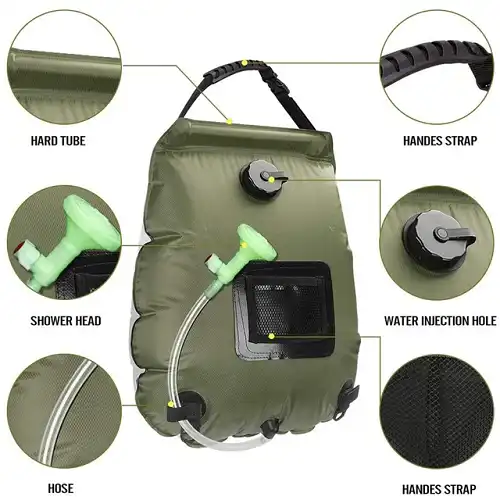
Pros:
– Ultra-lightweight and packable
– Uses free solar energy
Cons:
– Dependent on sunny weather
– Can take hours to heat water
Portable Solar Water Heaters
Portable heaters designed specifically for camping use reflective panels to concentrate sunlight and efficiently heat water. This provides faster solar heating. Models that fold up easily offer increased portability.
Pros:
– Faster solar heating
– Sustainable and free energy source
Cons:
– Bulkier than water bags
– Needs direct sunlight to function
Campsite-Friendly Electric Heating Options
For car camping where electricity is accessible, there are convenient electric options for heating water. These provide push-button simplicity.
Portable electric kettles
Electric kettles allow you to heat a set amount of water to boiling with the press of a switch. They are extremely convenient and energy-efficient. You just need access to an electrical outlet in your campsite.
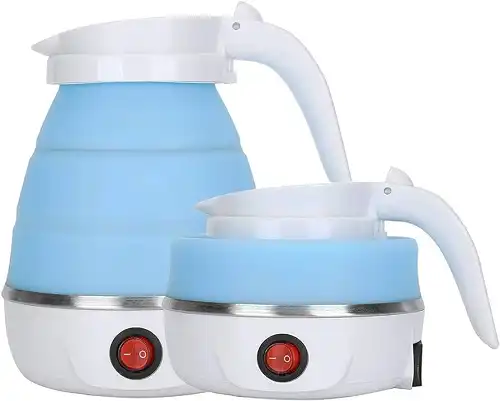
Pros:
– Fast and easy boiling water
– Precise temperature control
– Energy efficient
Cons:
– Dependent on electric source
– Heats small amounts per use
Immersion heaters
These portable heating rods are immersed into containers of water to quickly heat it. They provide fast electric heating while camping as long as you have access to power.
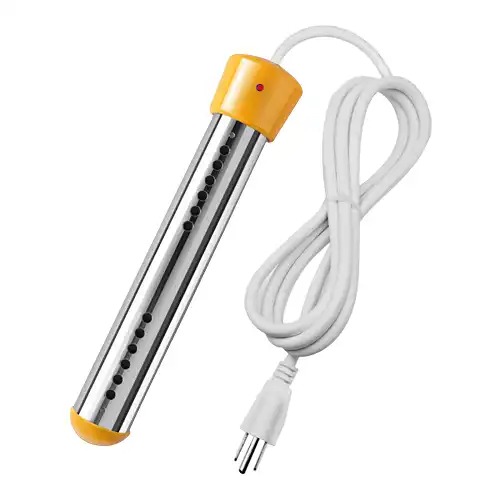
Pros:
– Rapid electric heating
– Heats water in place
Cons:
– Electricity source required
– Exposed heating element
Power from Your Car
You can plug immersion heaters, electric kettles, or other devices into your car’s 12-volt outlet for power. This provides access to electricity for electric heating while camping anywhere you can park.
Pros:
– Makes use of readily available power source
– Allows electric heating remotely
Cons:
– Limited wattage from car outlet
– Need long extension cord for distance from car
How to Choose the Best Water Heating Method for You
With so many options, it helps to assess your specific needs when deciding the best way to heat water for your camping style.
Fuel availability and sustainability
If you are concerned about environmental impact, solar and electric options are the most eco-friendly. For off-grid reliability, campfire, propane, or liquid fuel stoves may be preferable.
Weight and portability
Small propane or isobutane canister stoves offer the best balance of functionality and packable weight. Immersion heaters and kettles are also extremely portable.
Speed and efficiency
Contained stoves tend to heat water quickest, especially pressurized gas canister options. Campfire kettles and solar also provide faster heating versus basic pots over a fire or solar bags.
Environmental impact
Solar, electric, and potentially sustainable biofuel options have the lowest impact. Open fires have higher emissions and land damage potential.
Budget considerations
Campfire or simple solar bags and water heaters have minimal upfront costs. Propane and liquid fuel stoves have moderate startup costs. Electric and integrated stove systems are the most expensive.
Pros of eco-friendly heating:
– Sustainable fuel sources
– Lower environmental impact
– Free solar power
- Cons:
– Speed and heating capacity disadvantages
– Dependent on conditions (weather, access to electricity)
Pros of canister stove systems:
– Fast and contained heat source
– Reliable fuel supply in canisters
– Simple to use
- Cons:
– Added fuel cost over time
– Canisters not refillable
Tips for Efficient Water Heating During Camping
Follow these tips to get the most out of your chosen water heating method:
Prepare water before the trip
Heat water at home and fill a stainless steel thermos. The insulated container will keep it hot for hours.
Use insulated containers
Thermoses retain heat to keep water warm longer. Insulated kettles and pots heat faster and hold temperature well.
Optimize fuel usage
Use lids to retain heat. Turn off stoves when water reaches target temp. Extinguish campfires when no longer needed.
Take safety precautions
Keep stoves and fires away from combustibles. Have fire/burn precautions in place. Take care handling hot containers.
Key Questions with Answers
Q1: What is the easiest way to heat water while camping?
A1: The easiest way to heat water while camping is by embracing tradition. Use a cast iron kettle suspended over an open flame. This connects you to outdoor enthusiasts of the past, offering a simple and primal method of water heating.
Q2: What can I use to heat water if I don’t have a camp stove?
A2: No camp stove? No worries! Get creative with a DIY approach. Use a portable grill for stability or fashion a makeshift water heater using items like aluminum foil to harness the sun’s rays. Lack of a stove shouldn’t hinder your outdoor adventure.
Q3: How do I safely heat water over a campfire?
A3: Safety first! While the campfire provides a rustic ambiance, it also poses risks. Keep a watchful eye, attend to the pots, and have safety equipment on hand. Ensure a safe distance from flammable items. With caution, you can enjoy a hydrated outdoor experience.
Q4: How long does it take to heat water with a solar shower?
A4: Patience is key when using a solar shower. Allow ample daylight hours for the sun to work its magic. By waiting patiently, you’ll be rewarded with an eco-friendly hot shower under the stars.
Summary
Heating water is essential for cooking, cleaning, and staying hydrated while enjoying the outdoors. With so many options for getting hot water on your campsite, you can choose the heating method that best fits your needs and camping style. Focus on efficiency, sustainability, and safety when harnessing the power of fire or solar for your next camping trip.

